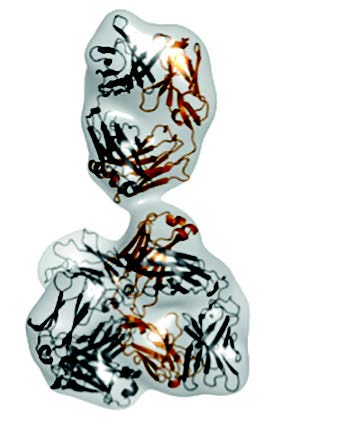- Home
- Industry
- Industry news
- Tracking the structure...
Tracking the structure of antibody molecules in solution
06-09-2016
Small angle X-ray scattering (SAXS) experiments can help pharmaceutical companies to double-check the results they get using their own characterization techniques. Pharmaceutical company Boehringer has used the ESRF to can confirm or deny previous results.
Share
Company
Boehringer
Challenge
Antibodies are a vital part of our immune system. These proteins bind to specific antigen proteins on the surface of foreign bodies such as bacteria and viruses in order to neutralize or disarm them. Since each antigen has a different shape, it requires a different antibody to attach to it. By tailoring antibodies to attach to proteins responsible for specific diseases, pharmaceutical companies seek to develop drugs that minimise side-effects caused by antibodies binding to the wrong targets. Researchers at Boehringer have been studying a molecule in an antibody and they found that it was unusually compact as a single crystal. The next step was to obtain structural information of the molecule in solution.
Sample
The antibody molecule in solution.
Solution
Using Small Angle X-ray scattering, the team managed to compare the measured scattering curve with that calculated from the X-ray structure they had previously solved. The results confirmed that the compact conformation does not exist in solution. Instead, the molecule adopts a Y-shaped conformation, commonly known for antibodies.
Benefits
SAXS experiments can help pharmaceutical companies to double-check the results they get using their own characterization techniques. SAXS is also complementary of X-ray macromolecular crystallography, and, as proven here, can confirm or deny previous results.
 |
 |
|
Conformation of the antibody as determined by X-ray crystallography (left); Y-shaped conformation of a different antibody that fits to the SAXS-data (right). |
|



